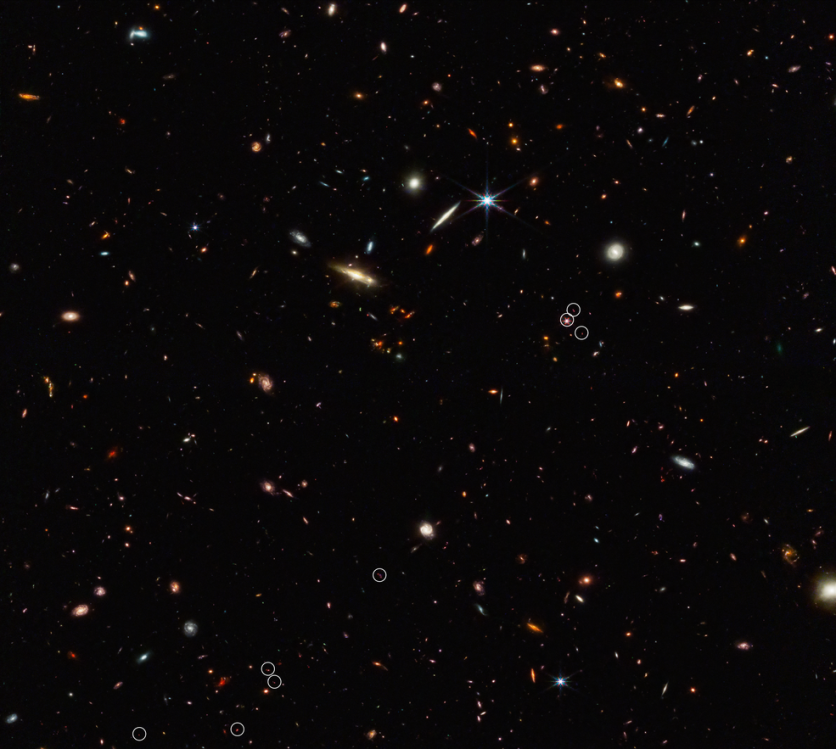Astronomers utilizing NASA's James Webb Space Telescope have captured a glimpse of the earliest strands of the cosmic web after uncovering a thread-like arrangement of 10 galaxies that existed some 830 million years after the Big Bang.
This awe-inspiring structure spans a staggering 3 million light-years and is anchored by a luminous quasar - a galaxy with an active, supermassive black hole at its core. The quasar, called J0305-3150, reportedly appears in the middle of the cluster, and its brightness outshines its host galaxy.

NASA's James Webb Space Telescope Captures Massive Cluster of Galaxies
The scientific team behind this breakthrough believes this cosmic strand structure will eventually evolve into a massive cluster of galaxies akin to the well-known Coma Cluster in the nearby universe.
Expressing surprise at the elongated and slender nature of this filament, team member Xiaohui Fan of the University of Arizona in Tucson said, "I expected to find something, but I didn't expect such a long, distinctly thin structure."
Feige Wang, the principal investigator of the program and also from the University of Arizona, added, "This is one of the earliest filamentary structures that people have ever found associated with a distant quasar."
The discovery emerged from the ASPIRE project (A SPectroscopic survey of biased halos In the Reionization Era), which aims to unravel the cosmic environments of the earliest black holes.
This comprehensive initiative will observe a total of 25 quasars that existed during the first billion years after the Big Bang - an era also known as the "epoch of reionization."
In addition to this groundbreaking revelation, the study delves into the properties of eight quasars in the young universe, seeking to comprehend how their central black holes, which emerged less than a billion years after the Big Bang, attained masses ranging from 600 million to 2 billion times that of our Sun.
Astronomers are actively pursuing evidence to elucidate how these black holes achieved such remarkable growth within such a short period.
Read Also : NASA's James Webb Space Telescope Discovers Vital Component of Life in Space for the First Time
Massive 'Seed' Black Hole
Feige Wang further noted that to "form these supermassive black holes in such a short time, two criteria must be satisfied."
"First, you need to start growing from a massive 'seed' black hole. Second, even if this seed starts with a mass equivalent to a thousand Suns, it still needs to accrete a million times more matter at the maximum possible rate for its entire lifetime," Wang said.
This quest for understanding is crucial in unraveling the assembly of these growing cosmic monsters. The observations made by Webb have also provided compelling evidence regarding the potential role of early supermassive black holes in regulating star formation within their galaxies.
While these black holes voraciously accrete matter, they can also generate powerful outflows of material. These mighty winds can extend far beyond the confines of the black hole, encompassing the entire galaxy, and significantly influence the process of star formation.
The mesmerizing revelations obtained through NASA's James Webb Space Telescope are unraveling the mysteries of the cosmic web and its intricate architecture.
These observations shed light on galaxies' formation and evolution, supermassive black holes' growth, and the profound influence these black holes wield in shaping the cosmos.
Related Article : NASA's James Webb Space Telescope Uncovers Surprising Galactic Discovery in Early Universe

ⓒ 2025 TECHTIMES.com All rights reserved. Do not reproduce without permission.




